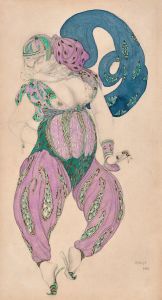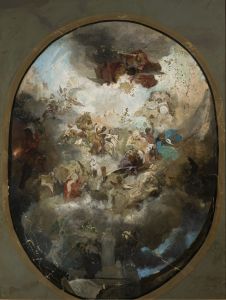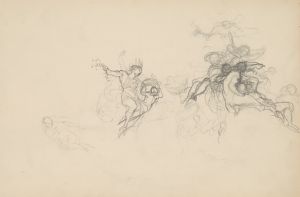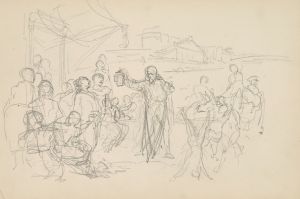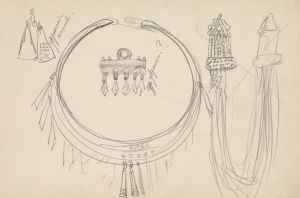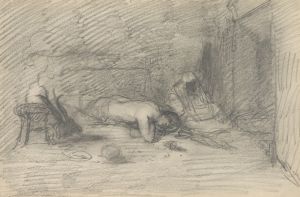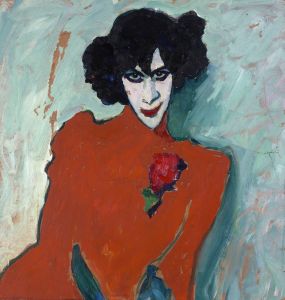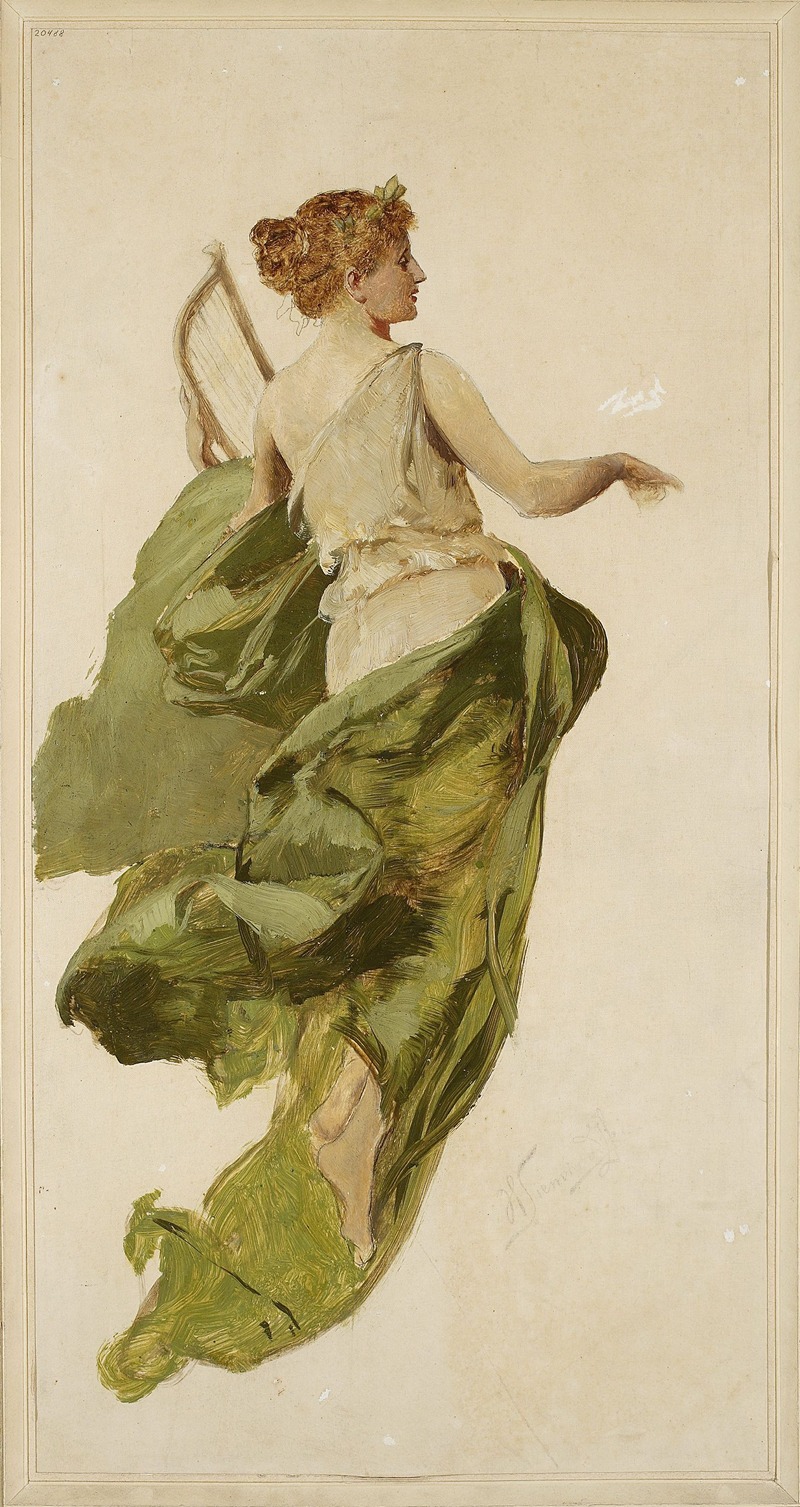
Allegory of Music, sketch for the project of the stage curtain of the Słowacki Theatre in Kraków
A hand-painted replica of Henryk Siemiradzki’s masterpiece Allegory of Music, sketch for the project of the stage curtain of the Słowacki Theatre in Kraków, meticulously crafted by professional artists to capture the true essence of the original. Each piece is created with museum-quality canvas and rare mineral pigments, carefully painted by experienced artists with delicate brushstrokes and rich, layered colors to perfectly recreate the texture of the original artwork. Unlike machine-printed reproductions, this hand-painted version brings the painting to life, infused with the artist’s emotions and skill in every stroke. Whether for personal collection or home decoration, it instantly elevates the artistic atmosphere of any space.
"Allegory of Music, sketch for the project of the stage curtain of the Słowacki Theatre in Kraków" is a notable work by the Polish painter Henryk Siemiradzki. This sketch was created as part of the preparatory work for the stage curtain of the Juliusz Słowacki Theatre in Kraków, Poland. Siemiradzki, a prominent artist of the 19th century, was known for his historical and allegorical paintings, often characterized by their detailed execution and classical themes.
The Juliusz Słowacki Theatre, named after the famous Polish Romantic poet Juliusz Słowacki, was established in 1893 and quickly became one of the most important cultural institutions in Kraków. The theatre's construction was part of a broader movement to promote Polish culture and arts during a period when Poland was partitioned and under foreign rule. The inclusion of Siemiradzki's work in the theatre's decor was a testament to his esteemed position in the Polish art world.
Siemiradzki's "Allegory of Music" is a preparatory sketch that reflects his meticulous approach to large-scale projects. The sketch was intended to guide the creation of the final stage curtain, which would serve as a prominent visual element in the theatre. Allegorical in nature, the sketch likely features personifications of music and related themes, rendered in Siemiradzki's characteristic style that blends realism with idealized classical forms.
The final stage curtain, based on Siemiradzki's designs, was a significant artistic achievement and contributed to the theatre's reputation as a center of cultural excellence. The curtain itself, once completed, would have been a grand and elaborate piece, designed to captivate audiences and enhance the theatrical experience.
Henryk Siemiradzki (1843-1902) was a Polish painter who studied at the Imperial Academy of Arts in Saint Petersburg and later in Munich and Rome. He gained international recognition for his large-scale historical and biblical scenes, often set in ancient Rome or Greece. His works are characterized by their dramatic compositions, rich color palettes, and attention to detail. Siemiradzki's ability to convey complex narratives through his art made him a sought-after artist for public and private commissions.
The "Allegory of Music" sketch is an example of Siemiradzki's skill in creating allegorical imagery that communicates broader cultural and artistic themes. While the sketch itself is a preparatory work, it holds significant value as part of the creative process behind one of Kraków's most important cultural landmarks.
Today, the Juliusz Słowacki Theatre remains a vital part of Kraków's cultural scene, hosting a wide range of performances and events. Siemiradzki's contributions to the theatre's artistic heritage are remembered as an integral part of its history, reflecting the enduring legacy of his work in Polish art and culture.








